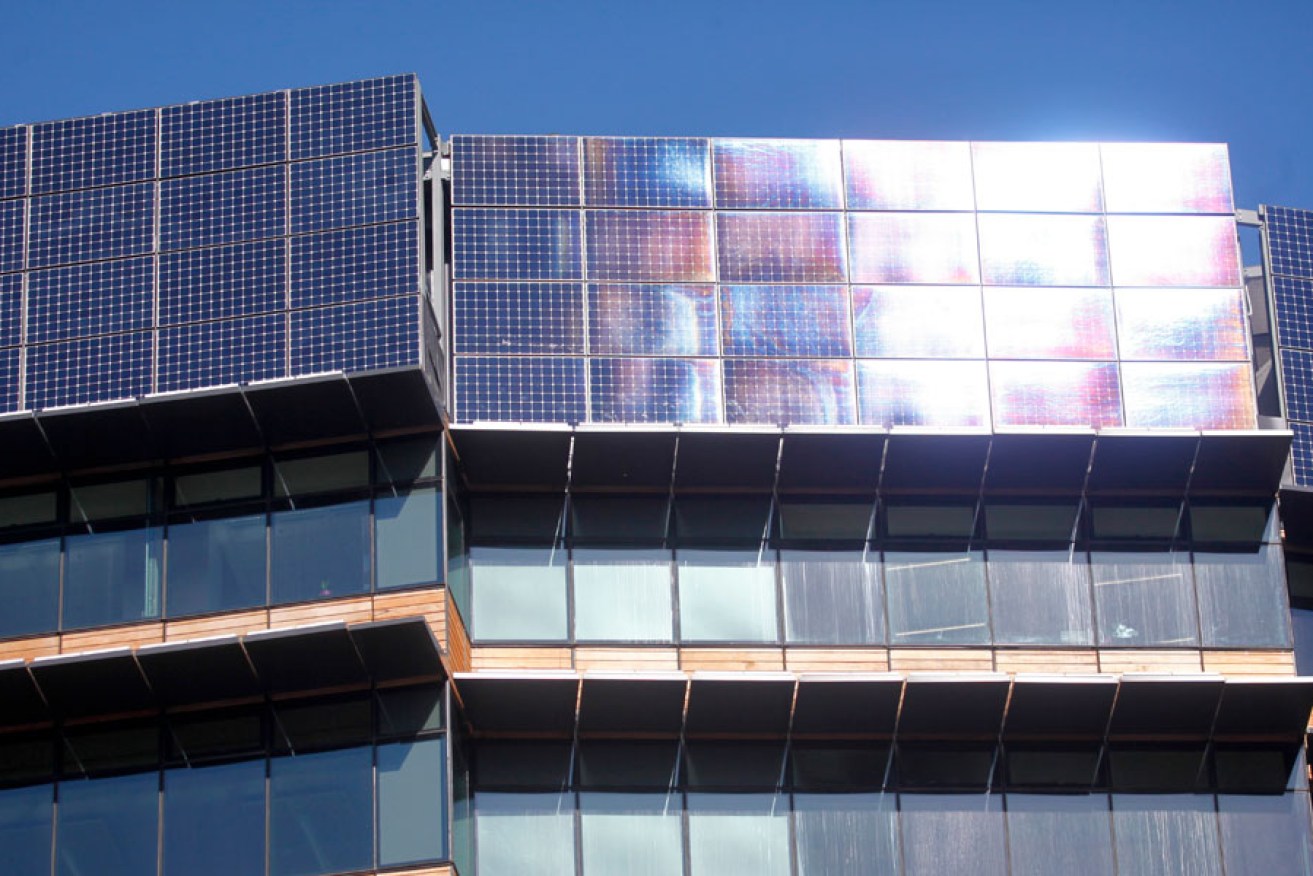Solargeddon: A blockbuster no-one wants to see

Solar panels on the Canberra building once leased to the now abolished Department of Climate Change.
Current thinking on the Federal Government’s review of our renewable energy targets has produced a description worthy of the biggest blockbuster: Solargeddon.
And recent reports have fuelled this.
The renewable energy industry was given a boost when former Prime Minister John Howard introduced a target of generating 20 per cent of our electricity from renewable sources by 2020.
Yet this target is now in the firing line.
The Federal Government’s appointment of businessman Dick Warburton to lead a review of the target was met with raised eyebrows. Mr Warburton has a reputation as a sceptic of man-made climate warming and so, the theory goes, is likely to produce a savage axe to our country’s commitment to renewable energy.
The Renewable Energy Target (RET) was initially estimated to create an industry producing 41,000 gigawatt/hours every year from 2020.
The recent flavour of the month has included suggestions that the RET should focus on a “true 20 per cent” target, which would produce a scaleback to 27,000GWh but still meeting a target of 20 per cent of reduced demand. Complete abolition of the RET could see this drop to 16,000GWh.
What is considered as true 20 per cent is anyone’s guess with conflicting reports, articles and modelling introduced during the process – each having their own perspective depending on which side of the RET fence the author sits.
And now reports last week indicate Prime Minister Tony Abbott has instructed Mr Warburton to do more work on the abolition of the target, raising more concerns of, well, a Solargeddon.
Whether these instructions from Mr Abbott to Mr Warburton are an indication of the renewable energy doom to come, no one is certain. They may be a tactic to increase fear in the renewable energy camp, hoping that we will be more likely to settle for a “true 20 per cent” target rather than lose the RET altogether.
I remain positive and deep down can’t imagine how our government could willingly and knowingly initiate a decision that could see the end of the renewable energy sector in Australia or the destruction of our international reputation as a stable place for investment.
South Australia’s growing renewable energy expertise is one solution among many that can rebuild this state.
The details of any review haven’t been revealed, so it is impossible to outline their impact on the industry, and initial reports may simply be a political tactic to allow for a less destructive outcome.
Perhaps more of interest to all parties is what it means to the bills they receive. The Climate Institute estimates coal-fired power generators could receive an additional $25 billion in profits between 2015 and 2030. This means more money for the big players and where does that leave the hard-working home owners and businesses?
We unashamedly support the current RET, with no change. When one of the world’s biggest economies and biggest polluters, the United States, outlines plans to support carbon pricing, then it makes very clear sense to invest in renewable energy for long-term gains – both economic and environmental. We have a responsibility to our communities and our families to do what is best for our country, and not be influenced by the power and money backing of some anti-RET industries.
To be transparent, our own business benefits when consumers and businesses invest in solar, but those same customers have benefited from reduced power bills. It’s a win-win: we love that we can work in an industry that we are passionate about and where we can make a difference.
Abolishing the RET will have an impact on our business. However, the review of the RET has far-reaching implications for South Australia beyond one business, or even the entire solar industry.
The South Australian economy has suffered a number of body-blows from the imminent closure of automotive manufacturing and questions are being raised about our investment in defence and shipbuilding. Yet the innovations that are currently taking place within our own industry offer spin-offs that are already producing export income. South Australia’s growing renewable energy expertise is one solution among many that can rebuild this state.
So jumping at the shadows of the RET Review is somewhat premature. The renewable energy industry is less than 15 years old and still growing, and the international push for clean energy production is creating an encouraging environment for supporting the current target.
This may yet signal a blockbuster Solargeddon that hurts consumers, businesses and suppliers alike.
The big difference is that voters have a chance to talk to their MPs and tell them the story they want to see: a disaster scenario paid out of the growing profits of the big energy companies, or a sustainable story that offers us all a chance to grow.
Jenny Paradiso is managing director of South Australian solar company Suntrix.




